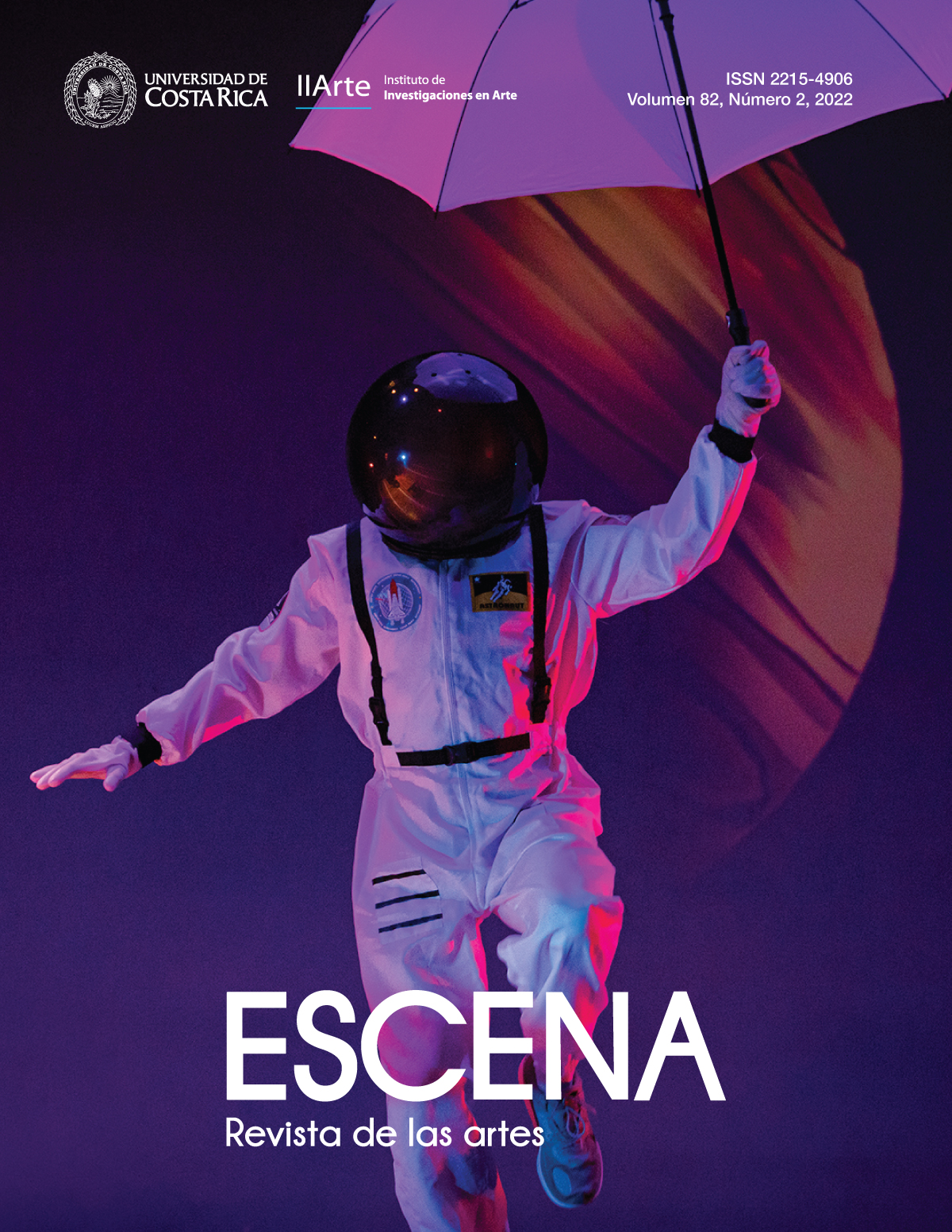Abstract
This study examines the relationship between Octavio Paz and Group 1890, a collective of young Indian artists who held their only exhibition in New Delhi in 1963. The analysis focuses on the dialogue that emerges from the exhibition catalogue, which includes an introductory essay by Paz as well as Group’s provocative manifesto. Through a reading of Paz and the group’s approaches to artistic novelty, the role of the national, and the art-reality relationship, this study seeks to trace a South-South artistic dialogue based on incongruity and heterogeneity. In the exhibited works, the poet sees the expression of a global avant-garde, influences by European movements, built in opposition to the national folkloric tradition, and devoted to a deep exploration of reality without ever espousing realism. Meanwhile, Group 1890’s manifesto projects an almost nihilistic vision that, despite acknowledging a European predecessor in its dedication, rejects its national tradition without embracing universalist aims and conceptualizes art as an independent field separate from what’s real.
References
Bhattacharya, M. (1998). Echoes of India: The poems of Octavio Paz. India International Centre Quarterly, 25(1), 1-19.
Bourdon, Y. (1 de diciembre de 2019). Ser esto y lo otro: Octavio Paz y la India. Letras Libres.
Recuperado de https://letraslibres.com/revista/ser-esto-y-lo-otro-octavio-paz-y-la-india/
Bradu, F. (2012). Persistencia de la India en Octavio Paz. Acta poética, 33(2), 95-108.
Briceño González, S. (2014). Octavio Paz y los poemas kāvya: un acercamiento. En X. Martínez Ruiz, & D. Rosado Moreno (Eds.), Festines y ayunos: ensayos en homenaje a Octavio Paz (1914-2014) (pp. 49-77). Ciudad de México, México: Instituto Politécnico Nacional.
Brown, R. (2005). P.T. Reddy, neo-tantrism, and modern art in India. Art Journal, 64(4), 26-49.
Camhaji Mascorro, E. (5 de diciembre de 2019). Octavio Paz, en los ojos de la India. El País. Recuperado de https://elpais.com/cultura/2019/12/02/actualidad/1575304351_072138.html
Carpenter, V. (2002). “From yellow to red to black”: Tantric reading of “Blanco” by Octavio Paz. Bulletin of Latin American Research, 21(4), 527-544.
Castany Prado, B. (2007). Literatura posnacional. Murcia, España: Editum.
Caws, M.A. (2001). The poetics of the manifesto: newness and nowness. En M.A. Caws (Ed.), Manifesto: A century of isms (pp. xix-xxxiii). Nebraska, United States: University of Nebraska Press.
Dey, S. (1976). Indian themes in Neruda and Paz. Indian Literature, 19(2), 11-24.
Dhingra, A. (2004). La India en la obra de Octavio Paz: Algunas reflexiones. En I. Lerner, R. Nival, & A. Alonso (Eds.), Actas del XIV Congreso de la Asociación Internacional de Hispanistas (pp. 16-21). Nueva York, Estados Unidos: Juan de la Cuesta Hispanic Monographs.
Durán, M. (1971). La huella del Oriente en la poesía de Octavio Paz. Revista iberoamericana, 37(74), 97-116.
Ganguly, S.P. (2004). La recepción india y la otredad en la poesía de Octavio Paz. En I. Lerner, R. Nival, & A. Alonso (Eds.), Actas del XIV Congreso de la Asociación Internacional de Hispanistas (pp. 221-225). Nueva York, Estados Unidos: Juan de la Cuesta Hispanic Monographs.
Group 1890, & Paz, O. (1963). Group 1890 catalogue. Asian Art Archive, Geeta Kapur and Vivan Sundaram Archive, Hong Kong, China. Recuperado de https://aaa.org.hk/en/collections/search/archive/geeta-kapur-and-vivan-sundaram-archive-exhibition-catalogues-from-geeta-and-vivans-collection/object/group-1890-191155
González-Ormerod, A. (2014). Octavio Paz’s India. Third World Quarterly, 35(3), 528-543.
Greenberg, C. (1982). Modernist painting. En F. Frascina, & C. Harrison (Eds.), Modern art and modernism: A critical anthology (pp. 5-10). New York, United States: Harper and Row.
Guerrero, G. (2012). Literatura, nación y globalización en Hispanoamérica: explorando el horizonte post-nacional. Revista de Estudios Hispánicos, 46(1), 73-81.
Harkema, L. (2017). Spanish modernism and the poetics of youth: From Miguel de Unamuno to La Joven Literatura. Toronto, Canada: University of Toronto Press.
Husáin, M.F. (1982). Hanuman [Serie de litografías]. Recuperado de https://collections.vam.ac.uk/item/O1273333/hanuman-lithograph-husain-maqbool-fida/
Ilarregui, G. (2008). El mono gramático: orientalismo y poética de Octavio Paz. En S. Nagy-Zekmi (Ed.), Moros en la costa (pp. 187-200). Madrid, España: Iberoamericana / Vervuert Verlagsgesellschaft.
Kantor, R. (2022). South Asian writers, Latin American literature, and the rise of Global English. Cambridge, United Kingdom: Cambridge University Press.
Kapur, G. (2000). When was modernism?: Essays on contemporary cultural practice in India. Nueva Delhi, India: Tulika.
Klengel, S., & Wallner, A.O. (Eds.). (2016). Sur South: Poetics and politics of thinking Latin America/India. Madrid, Spain: Iberoamericana Editorial Vervuert.
Klengel, S., & Wallner, A.O. (Eds.). (2016). Sur South: Poetics and politics of thinking Latin America/India. Madrid, Spain: Iberoamericana Editorial Vervuert.
López Cafaggi, C.E. (2017). Dos jardines de la modernidad: India en Octavio Paz. Estudios de Asia y África, 52(2), 349-386.
Luis, S.K. (2016). Group 1890. The Routledge encyclopedia of modernism. Publicación anticipada en línea. DOI: 10.4324/9781135000356-REM822-1
Luis, S.K. (2019). Allegorizing modernism: J. Swaminathan and the question of uneven development in art. En R.N. Misra, & P. Dave-Mukherji (Eds.), Rethinking Comparative Aesthetics in a Contemporary Frame (pp. 139-174). Shimla, India: Indian Institute of Advanced Study.
Lyon, J. (1999). Manifestoes: Provocations of the modern. New York, United States: Cornell University Press.
Miranda Medina, M. (en prensa). Genealogía del conocimiento en el Neptuno alegórico: Isis, Neptuno y Minerva. Hispanic Review.
Mitter, P. (2008). Decentering modernism: Art history and avant-garde art from the periphery. The Art Bulletin, 90(4), 531-548.
Morales, A. (19 de abril de 2018). Fulgor de Octavio Paz en la India. New York Times. Recuperado de https://www.nytimes.com/es/2018/04/19/espanol/cultura/octavio-paz-india.html
Novillo-Corvalán, P. (2021). Global South modernism: Tagore, Victoria Ocampo, and the geopolitics of horizontal relations. Modernist Cultures, 16(2), 164-190.
Paz, O. (1990). Obra poética (1935-1988). Barcelona, España: Seix Barral.
Poggioli, R. (1981). The theory of the avant-garde. Cambridge, Massachusetts: Harvard University Press.
Sheridan, G. (2004). Poeta con paisaje: ensayos sobre la vida de Octavio Paz. Ciudad de México, México: Ediciones Era.
Sundaram, V. (1972). The heights of Macchu Picchu [Dibujos en tinta]. Recuperado de https://aaa.org.hk/en/collections/search/archive/geeta-kapur-and-vivan-sundaram-archive-the-heights-of-macchu-picchu-1972
Sundaram, V. (1995). Swaminathan and the moment of Group 1890. Journal of Arts & Ideas, 27-28, 147-150.
Taboada, H. (1998). Un orientalismo periférico: viajeros latinoamericanos, 1786-1920. Estudios de Asia y África, 33(2), 285-305.
##plugins.facebook.comentarios##

This work is licensed under a Creative Commons Attribution-NonCommercial-NoDerivatives 4.0 International License.
Copyright (c) 2022 José Darío Martínez Milantchi



